Petra is probably Jordan’s most well-known attraction. Located in the southern region of Jordan, t’s a UNESCO World Heritage Site, was voted one of the “New 7 Wonders of the World” in 2007, and appears in popular culture in films such as Indiana Jones and the Last Crusade.
This area has been inhabited by people for a very, very long time, but the structures that tourists come to see were mostly built by the Nabatean people around the 1st century B.C. To the Nabateans of that time, the city was known as Raqmu. (“Petra” is the Greek name.) It was the capital of their kingdom, and at the height of their civilization, they were a thriving and prosperous kingdom.
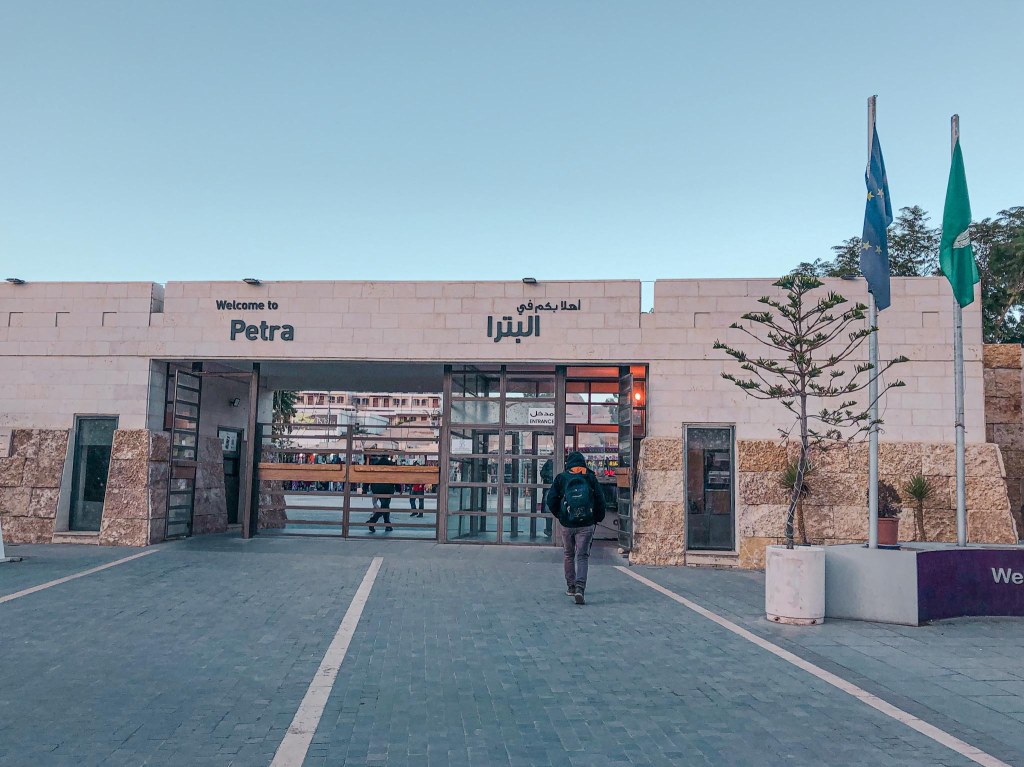
There’s a lot to see, and we only had one day to dedicate to Petra, so we got an early start and headed to Petra around 7am. Entry fees were included in our Jordan Pass, a sightseeing package that includes visa fees and entry into many attractions in Jordan. Admission into Petra is pricey – at time of writing, 50 JD – and the Jordan Pass is 70 JD, so it you’re planning to visit Petra and spend a few days in Jordan visiting other attractions, it’s a good deal.

From the entrance, there is a brief walk along a trail through rugged landscape before suddenly, you are enveloped by the tall canyon walls of the Siq.
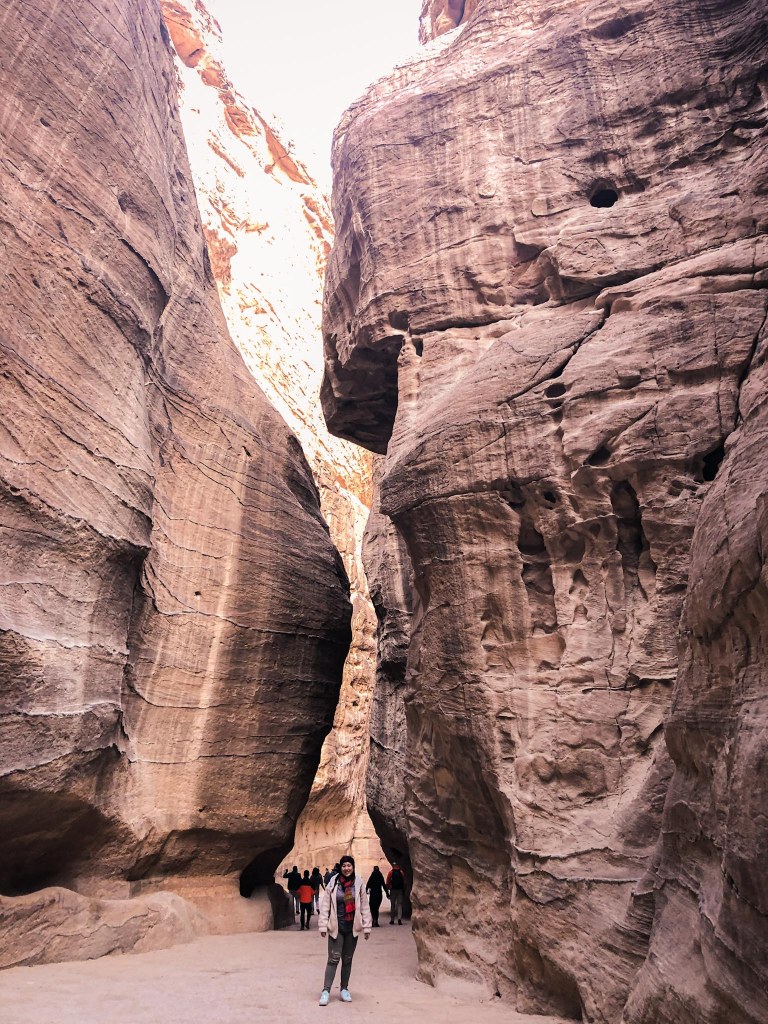
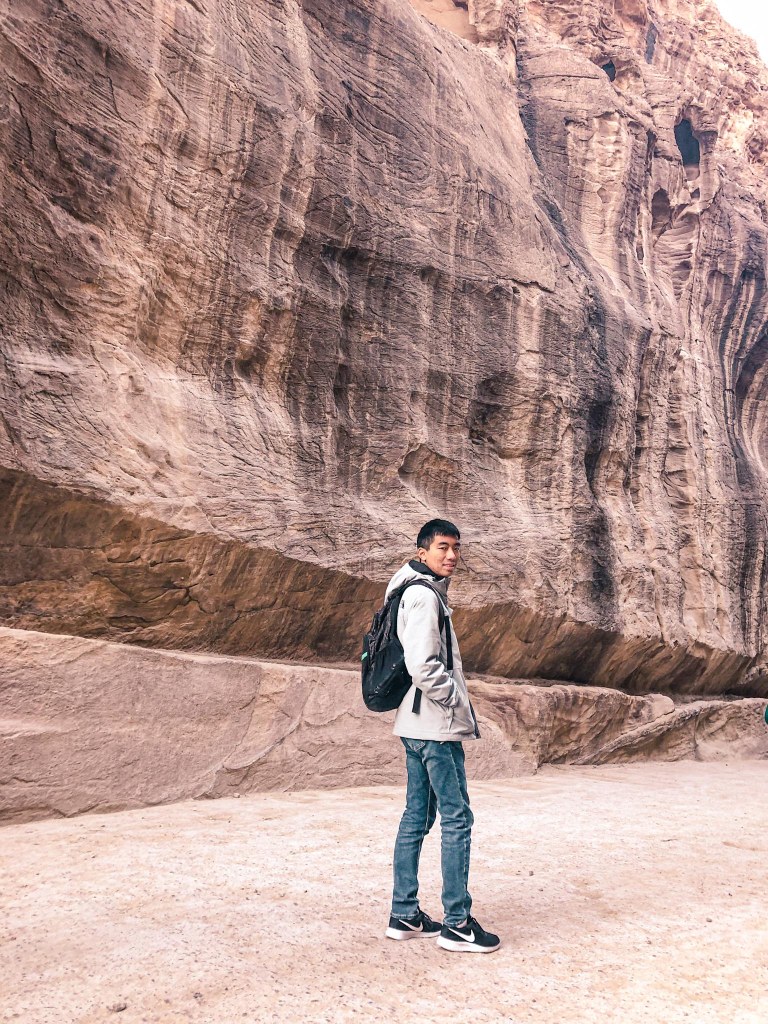
The Siq is a 1.2km long gorge with dramatically high walls that serves as the entranceway into the ancient city of Petra. We hadn’t even entered the city yet and I could already see the handiwork of the Nabateans in the form of facades, waterways, and sculptures carved into the rock.
The Nabateans were expert hydraulic engineers. They were able to collect, transport, and store rainfall and create an oasis in the middle of the desert. Incredible! In the Siq, you can see channels carved into the canyon walls that were used to transport water.
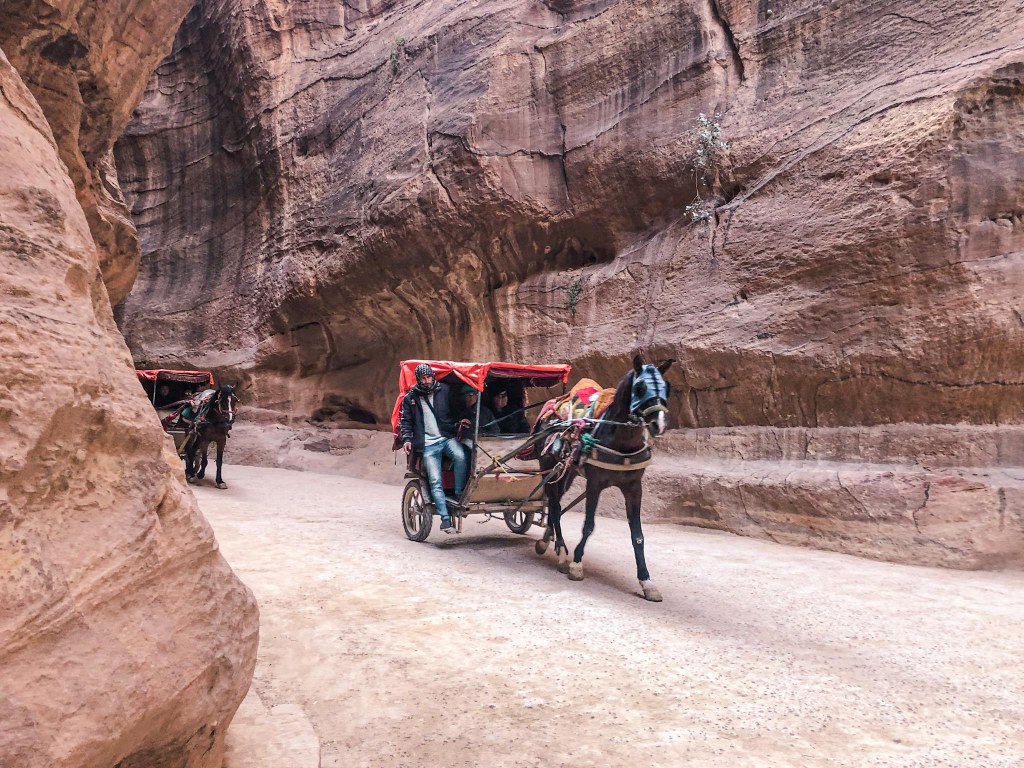
Situating their city behind the Siq was a strategic move for the Nabateans – it allowed them to defend their city easier, since this is the main path for outsiders to enter Petra.

Finally, after the 1.2 km walk, we caught our first glimpse of the Treasury – the most recognizable facade of Petra!
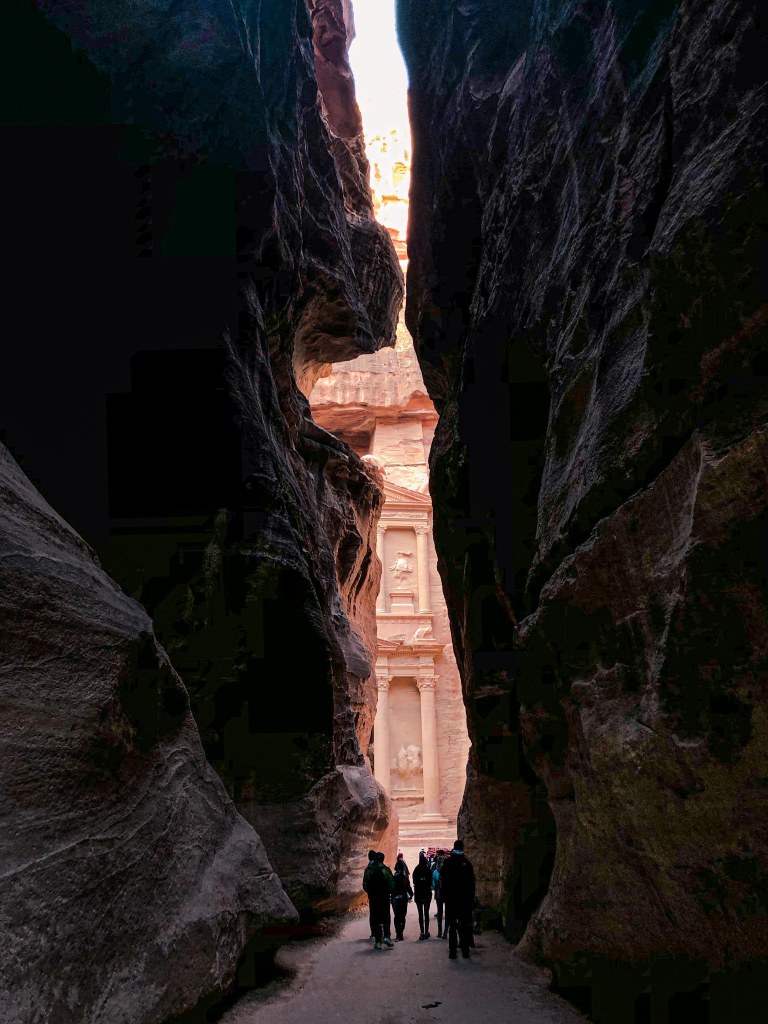
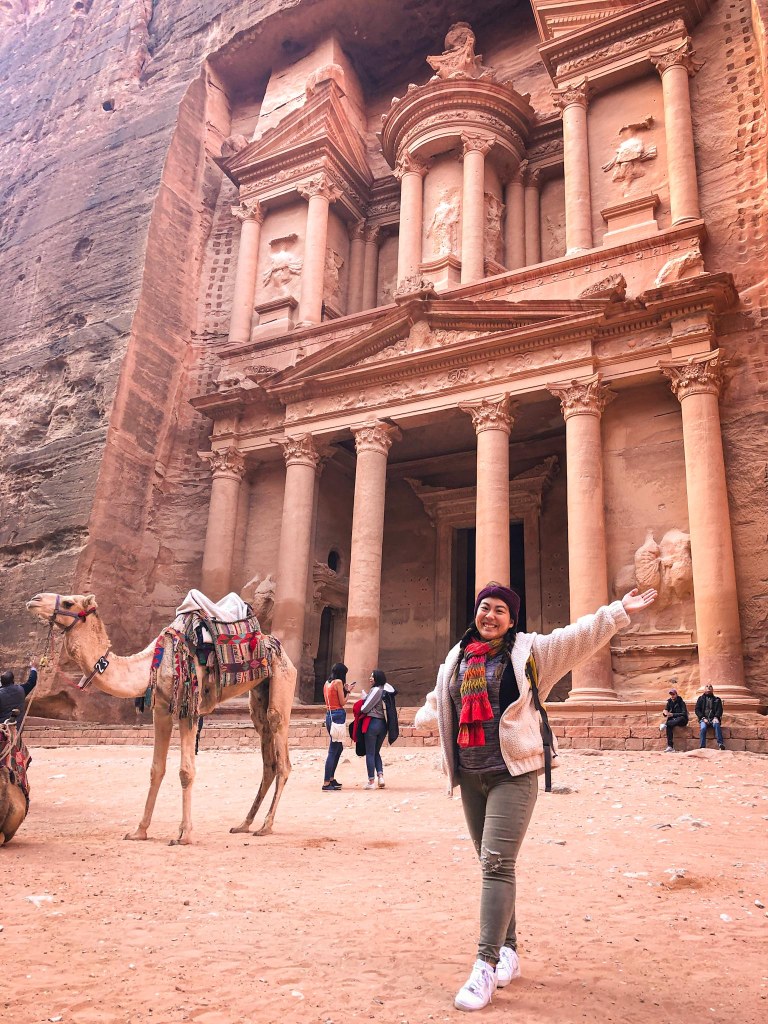
This facade is called Al-Khazneh, but nicknamed “the Treasury”. This nickname comes from local rumors that the structure holds treasure, though it is believed that it is actually a tomb. If you look closely, you can actually see bullet holes made by local Bedouin tribes that had hoped to break in and discover its riches.
Being over 2000 years old, it is amazing that small architectural details such as the engravings on the columns have been preserved!
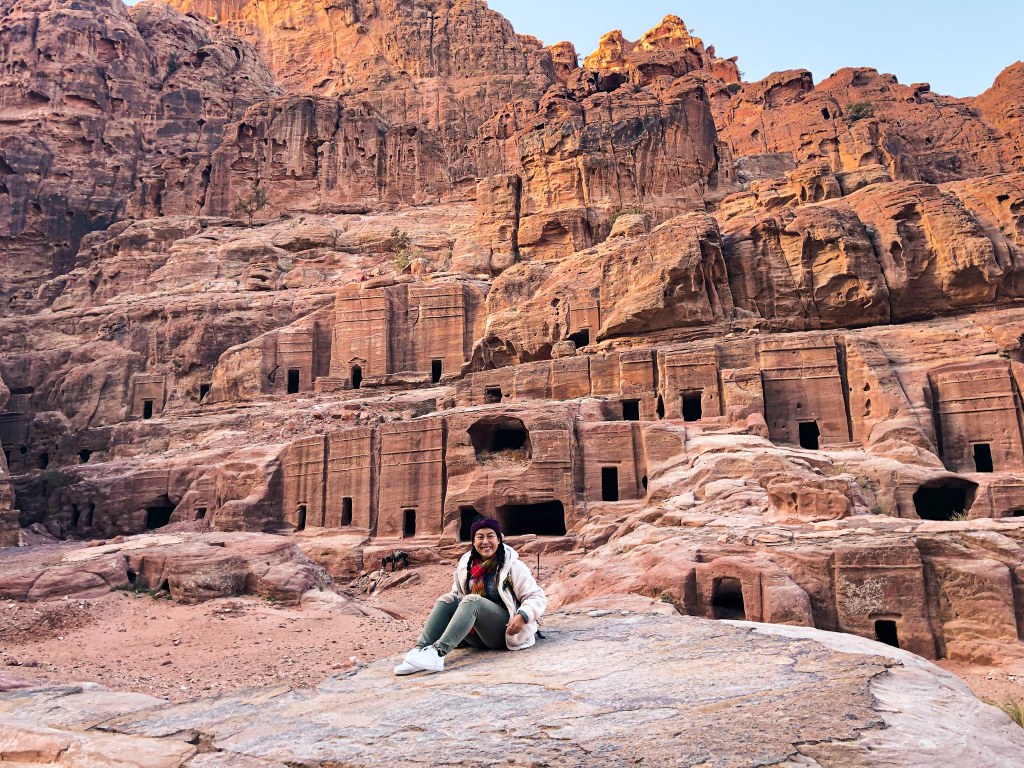
The Treasury is the “face” of Petra, but there is a lot more to see here. Seeing the ruins of other structures in Petra such as amphitheaters, streets, tombs, temples, and fountains, really drove home that this was an ancient city where people lived, worked, and thrived. It must have been so beautiful and grand back in the day!
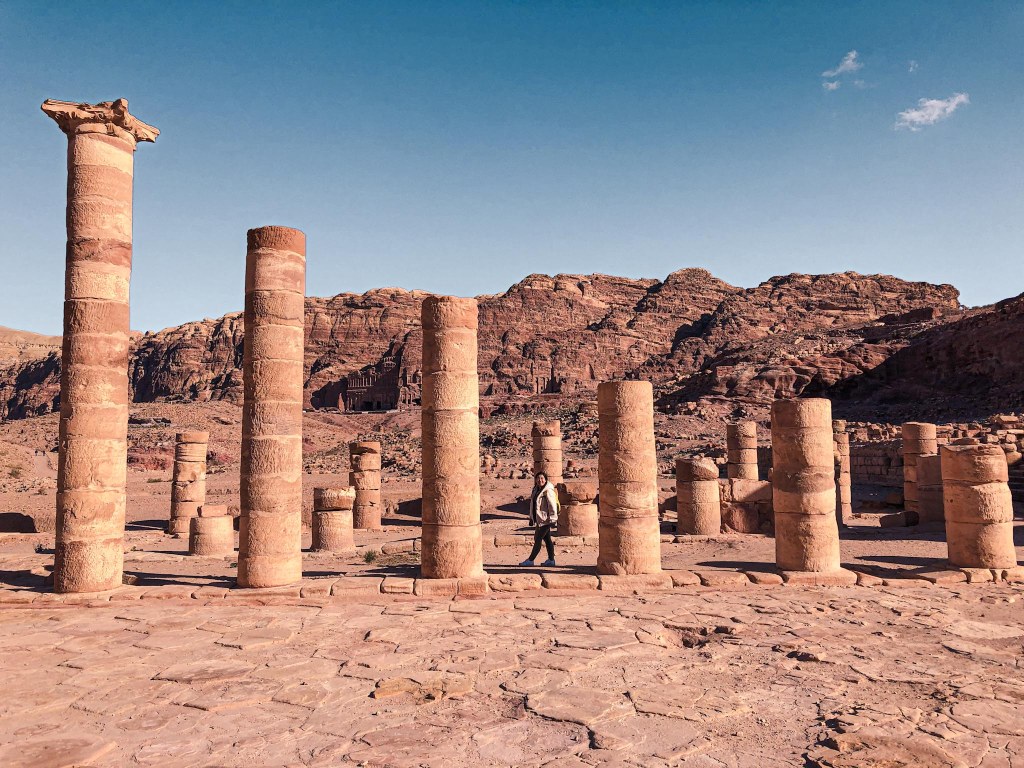
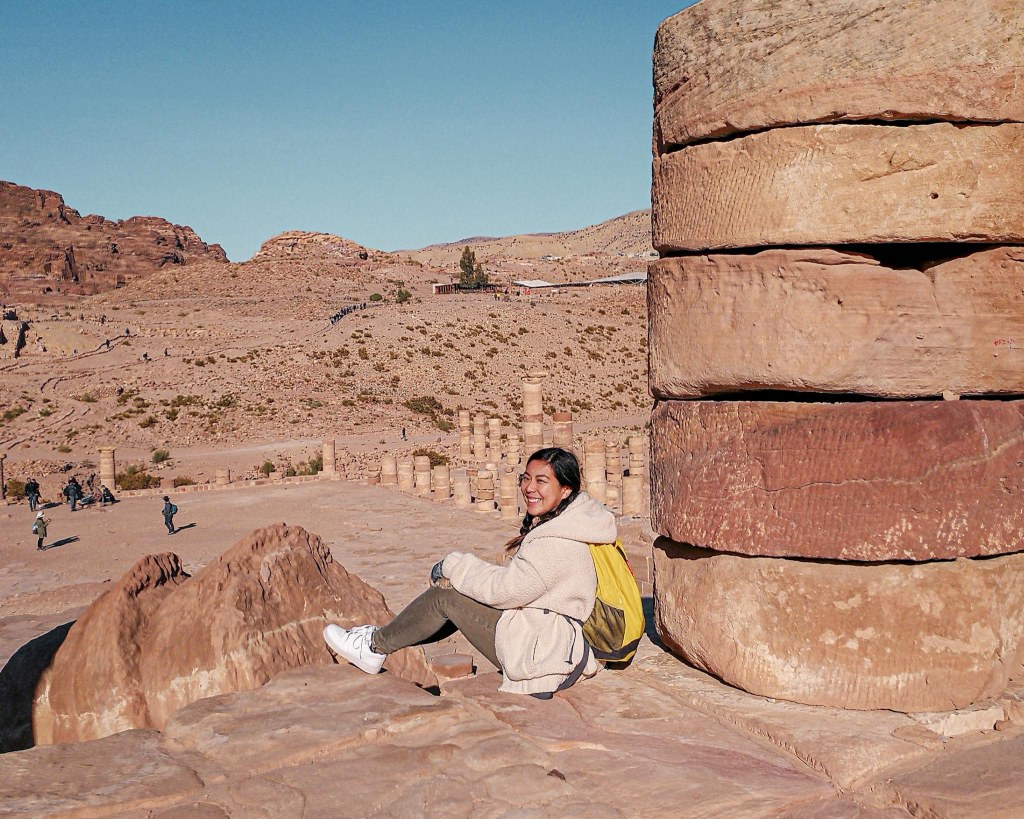
Road to the Monastery
A commonly made detour in Petra is the trail to Al Deir, or the Monastery. Like its name suggests, it is believed that this structure was used as a church during the Byzantine times, though it was probably originally built as a tomb.
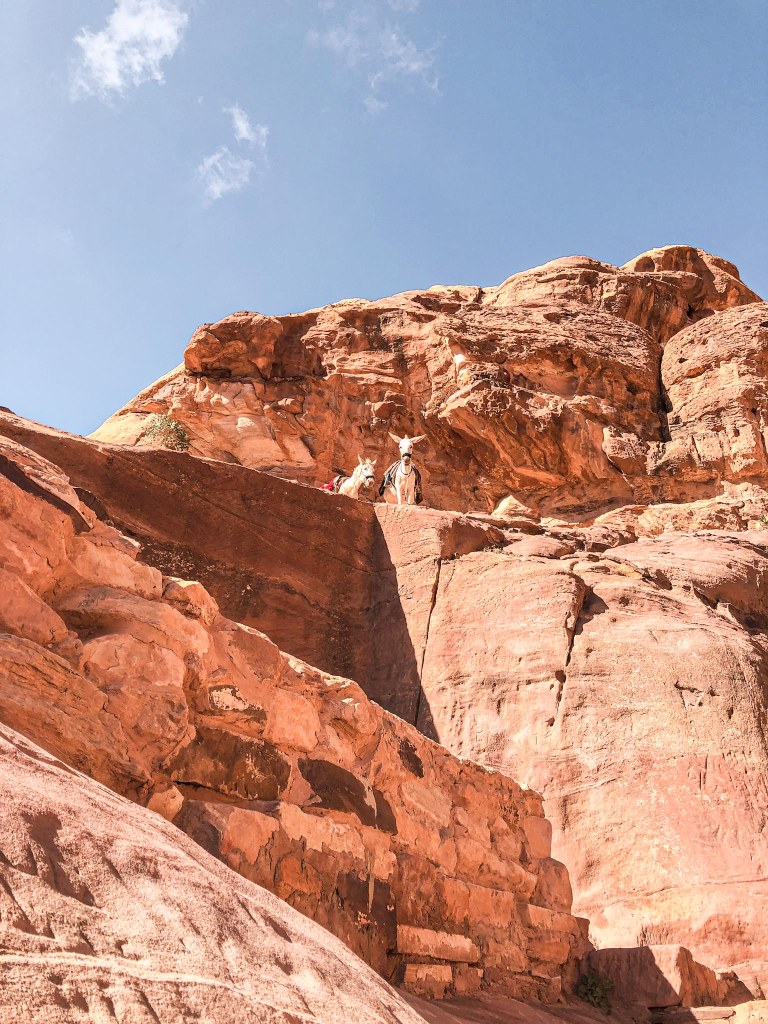
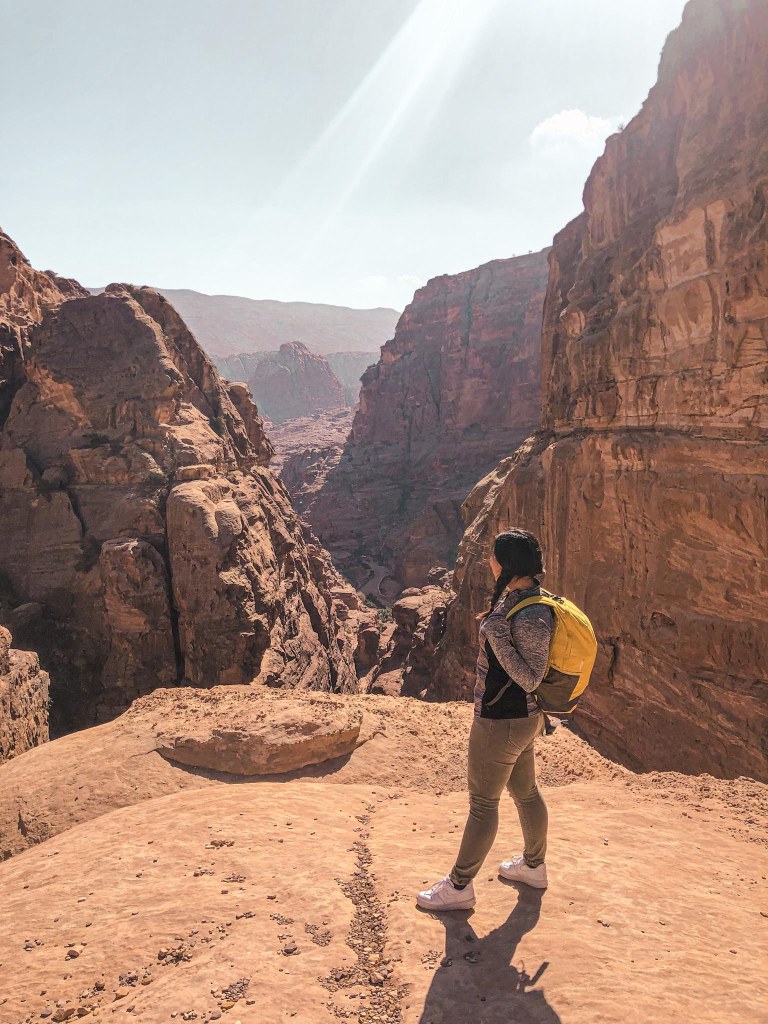
The trail is an uphill climb up multiple stairs carved into the rock – challenging, but very doable (covered in donkey droppings though!). Plus, the views along the way are amazing. It took us a little over one hour to reach the Monastery, but it was worth it! There’s a little restaurant there as well, so you can catch a break with a drink or snack.
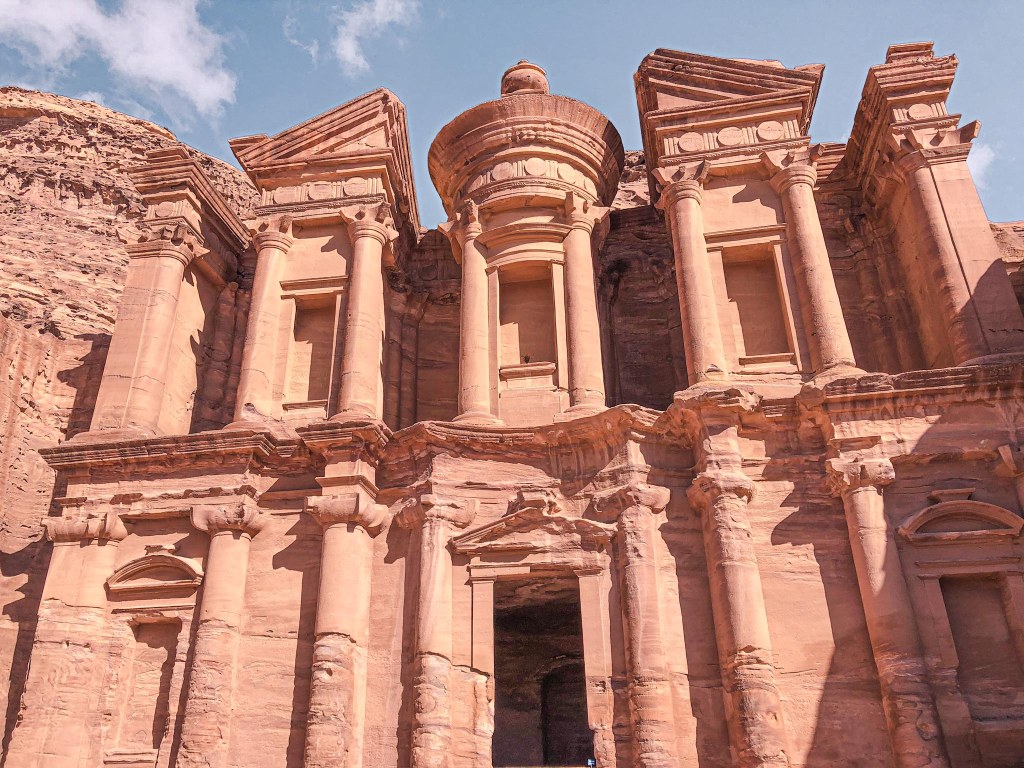
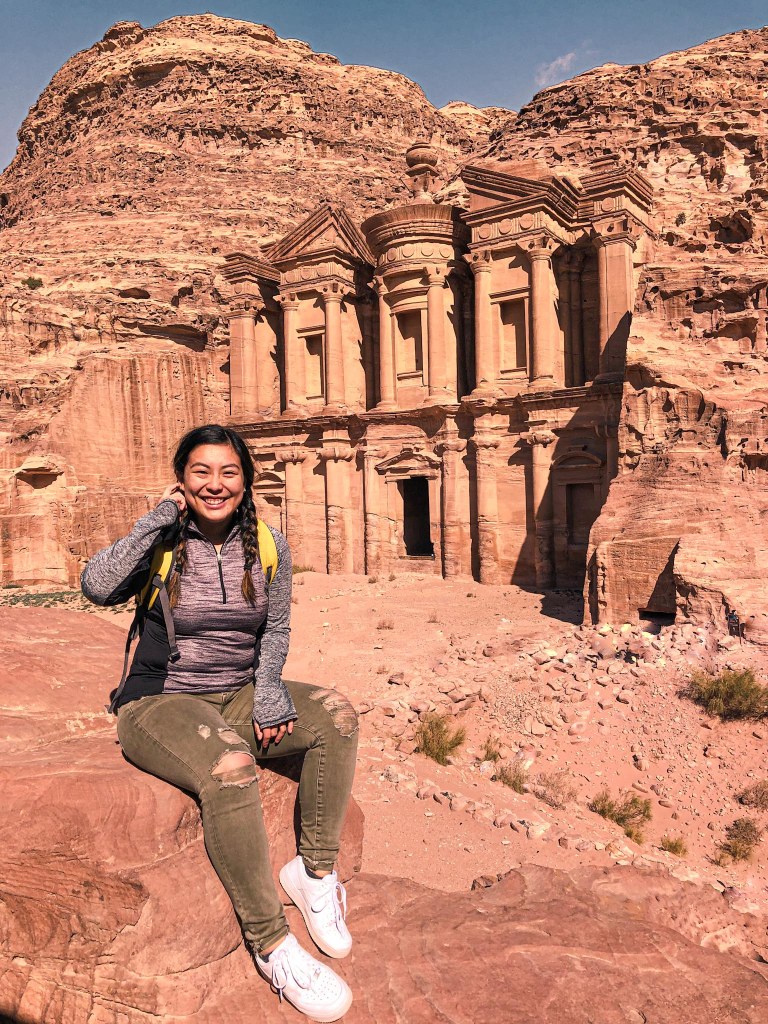
The Monastery is one of the larger monuments in Petra. The view along the way was amazing as well, so I recommend it! Because of the longer trek involved to get there, it is also less crowded (but there were still a good chunk of people milling about up here.)
There is a lot to see. By the time we left Petra, my feet were aching so bad… but my heart was full knowing we made the most of our one day in Petra!
What happened to the ancient city of Petra?
Petra flourished as a wealthy center of trade routes starting from around the 4th century B.C. However, as trade routes shifted, Petra started to decline, and was annexed into the Roman Empire in 106 A.D. It was further damaged in an earthquake during the 4th century. By the beginning of the 8th century, Petra was basically abandoned.
Tips for Visiting Petra
- Dedicate at least a whole day here (and wake up early!) – there is a lot to see!
- Put on your best walking shoes because you will be walking a lot.
- Consider packing a lunch or snacks. There are only two restaurants inside Petra. They are pricy and one of them was full when we tried to eat there. We ended up not eating the entire day and had to wait until we left Petra to have a meal. Many restaurants and hotels in Wadi Musa offer packed lunches for Petra excursions. And don’t forget water!
- The entrance fee is pricy, so consider getting the Jordan Pass – it is likely worth the money if you are planning to visit Petra along with other attractions in Jordan.

Sooo beautiful! Petra is on my bucket list! ❤